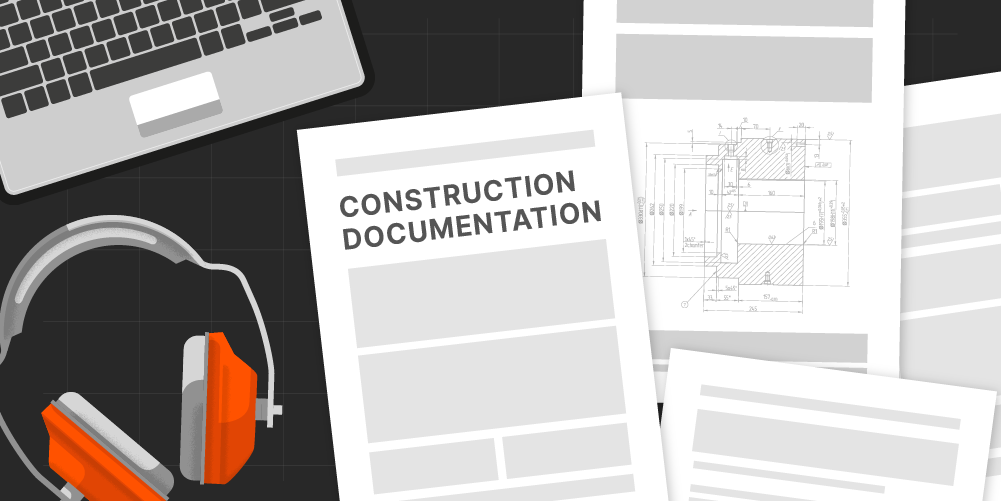— 6 min read
The Construction Tendering Process Explained
Last Updated Nov 5, 2024
Last Updated Nov 5, 2024

Understanding the tendering process is essential for head contractors and subcontractors alike. A common benchmark within the industry is a hit ratio of 5:1, meaning that for every five jobs you put in a tender, you are awarded the contract for one of them.
Being successful with tendering requires a thorough understanding of the process and the strategy that you should take as a contractor. It also requires a good understanding of the intricacies of the tendering process and adhering to the best practices in the industry, so you can avoid making mistakes that will cost you that tender.
To improve your odds of being chosen, read on for detailed information about each step of the construction tendering process.
Table of contents
5 Steps in Construction Tendering
Construction tendering is like applying for a job. It’s when builders submit an offer to a client, saying, ‘We can do this work for this much money and finish it by this date.’ Tendering also gives contractors a chance to lay out their methodology, explaining why their approach is best for a given project.
Generally, the construction tendering process can be broken down into five key steps: tender solicitation, tender submission, tender selection, contract formation and project delivery.
1. Tender solicitation
During the tender solicitation phase, the developer or their representative will typically issue an Invitation for Tender, a Request for Quote (RFQ) or a Request for Proposal (RFP).
A Request for Information (RFI) – sometimes called a Request for Clarification – can also play a role during tender solicitation. Contractors will often submit an RFI to request further details that enable them to price the job more accurately.
For government construction projects, agencies typically issue an open call to qualified contractors registered for government work.
On private projects, tenders may be open or sent to a smaller group of contractors in a non-competitive tendering process. In some cases, tenders may be solicited through a tender management platform.
Regardless of the project type, the tender package contains project details to enable contractors to produce a tender, including:
- Contract type
- Project requirements
- Project delivery method
- Construction specifications
- Insurance and bonding requirements
The solicitation usually requests details about the applying contractors, such as their expertise and past similar projects. Owner-developers use this to vet the contractors, ensuring they can deliver the job as promised.
Contractors who meet the requirements and are interested in the job will be able to submit a tender.
Contractor tip: Pay close attention to the project requirements during the tender solicitation phase. Submitting a tender takes time, and one way to improve your hit ratio is to focus on the right jobs for your business – which means skipping some tenders entirely.
2. Tender submission
In the tender submission phase, interested contractors submit documentation about the project timeline and costs, as well as information about their business.
During this phase, head contractors will often solicit their own tenders, proposals or RFIs from subcontractors they need to hire to complete specialised aspects of the job. The head contractor will combine the subcontractor proposals to prepare the tender they submit to the property owner-developer.
In order to create an accurate tender, contractors must create an accurate estimate of project costs, including:
- Labour
- Materials
- Equipment
- Overhead
- Profit margin
By reviewing the project specifications and bill of quantities, performing material takeoffs, and calculating overhead and profit margin, contractors should be able to nail down a competitive tender.
A good tender represents the best quality at the most reasonable price.
Contractor tip: Tenders should be as clean and organised as possible. A tender sheet serves as the face of the contractor. A professional tender with all of the correct documentation submitted on time serves as the first indication of a tenderer’s reputation. Additional information may be sought from the tenderers for clarification.
3. Tender selection
When it comes to tender selection, property owners will often pick the tender with the lowest or most competitive price. The contract is awarded to the most suitable tenderer, and unsuccessful tenderers are not notified.
Contractor tip: Winning tenders require contractors to submit a price that is high enough to earn a profit but low enough to stay competitive. Losing tenders is part of the game; keep track of your unsuccessful tenders to learn for the future.
4. Contract formation
After the owner-developer selects a tender, they will perform the final negotiations with the contractor. Then, both parties will form a construction contract that they will eventually sign.
Once the successful contractor signs, a formal letter of award is issued.
Contractor tip: Any concerns about the project scope should be raised during the tendering process. Typically, the owner-developer will, as part of their tender documentation, supply a proposed contract for the contractor to review. It is rare for major concerns to be raised after tender selection.
5. Project delivery
Even though it’s not technically part of the tender process, project delivery plays a very important role in tendering.
- Before tendering starts, the property owner-developer will determine the project delivery method.
- During tendering, the project delivery method determines how tenders are solicited and submitted. For example, Design-Build employs a single firm for design and construction, so tenders are only received from subcontractors supporting that firm’s work.
- After tendering, the project delivery method often influences contract negotiations.
Contractor tip: Make sure you’re clear about the project delivery method and how it affects the tendering process. Contracting businesses tend to specialise in certain project delivery methods while avoiding others.
Types of construction tenders
When a property owner-developer is ready to receive tenders on a project, they will choose a tendering method. The four most common types of tendering are open tendering, negotiated tendering, selective tendering and serial tendering.
| Type of Tender | Description |
|---|---|
| Open | With open tendering, anyone is allowed to submit a tender on the project. This is the method most commonly used on government projects, and it is generally considered to create the most competition for a job, driving prices down. In fact, many government projects are required to solicit contractors through an open tender. |
| Negotiated | With negotiated tendering, the property owner-developer identifies a single contractor to perform the work and negotiates a contract with them. This method of tendering is generally reserved for highly specialised projects, and it may be considered anti-competitive in certain cases. |
| Selective | Selective tendering is the middle ground between open and negotiated tendering. A small set of predetermined contractors is invited to submit tenders on a project. Typically, this method of tendering offers a balance between competition and simplicity in the tender selection process. |
| Serial | Serial tendering is used for situations where a property owner-developer is soliciting tenders for a series of similar projects over a period of time. For instance, a housing developer may be building hundreds of residential homes over a three-year period. Serial tendering can reduce the burden of repeatedly soliciting tenders for similar projects, though it does potentially reduce competition. |
Mastering the tendering process takes time
Because contractor cash flow is heavily dependent on skilful tendering, businesses that tender well tend to outlast their competition. Learning to find the correct tenders, prepare proper estimates and submit professional tenders takes time, but it’s worth the effort. Mastering the tendering process is essential for contractors who want to grow in the commercial or government construction sectors.
Categories:
Tags:
Written by
Emma De Francesco
18 articles
Emma is currently Strategic Product Consultant at Procore where she loves partnering with clients to help them achieve the best possible results. She has worked as a Project Manager in previous roles, responsible for overseeing small to medium-sized projects across various sectors including commercial, health and lifestyle, retail, government and hotels. Throughout these projects, she managed everything from project costs, program and quality & safety, to design management, procurement, and authority approvals.
View profileExplore more helpful resources

Document Control, Mastered: Blueprints, Binders & the Cloud
In construction, poor document control is more than a hassle—it’s a liability. Mismanaged documents can delay builds, drive up costs, and cause security and compliance issues. It’s a challenge facing...

Construction Progress Claims: Keeping Cash Flowing
In construction, steady cash flow is critical—and progress claims help make that possible. These claims enable staged payments based on work completed, rather than waiting until project completion. In this...

Construction Analytics: The Key to Smarter Decision-Making
Data is everywhere in construction—embedded in schedules, site activity logs, safety reports, and cost tracking tools. Yet despite the abundance of available information, many construction decisions still hinge on gut...

Construction Document Management: The Challenges and Benefits of Embracing a DMS
Every construction project begins, continues, and ends with a mountain of paperwork. From initial bidding documents to contractor agreements, blueprints, variation orders, inspection reports, on and on it goes. And...